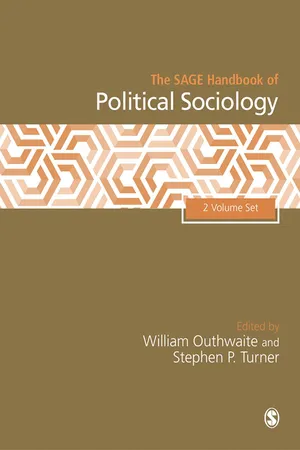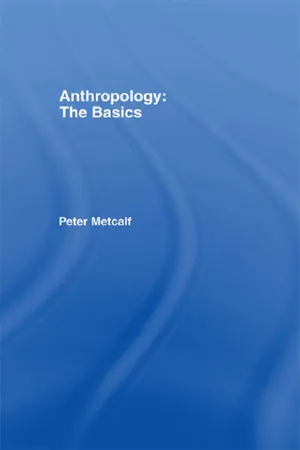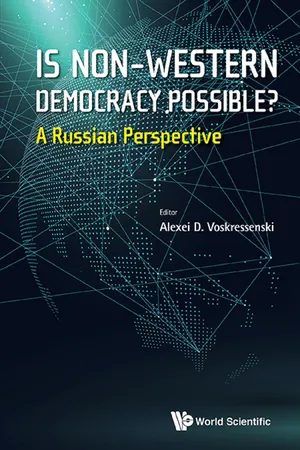History
African Kingdoms
African Kingdoms were powerful and influential states that existed in various regions of Africa before the colonial period. They were characterized by strong political structures, advanced trade networks, and rich cultural traditions. Some notable African Kingdoms include the Kingdom of Aksum, Ghana Empire, Mali Empire, and the Kingdom of Kongo. These kingdoms played a significant role in shaping the history and development of Africa.
Written by Perlego with AI-assistance
Related key terms
5 Key excerpts on "African Kingdoms"
- eBook - ePub
- Alex Thomson(Author)
- 2022(Publication Date)
- Routledge(Publisher)
The pre-colonial states that formed in the territory occupied by Mali today did not have rigid, clearly defined and enduring borders, nor did they have central political authorities with an ability to project direct power constantly into every community under their rule. Prior to the twentieth century, the notion of a single source of sovereign power did not exist in this part of the world. Ghana, Mali and Songhai were the ‘most hegemonic’ political entities produced by west African pre-colonial history, but even these three empires are best characterised as conglomerates of semi-autonomous villages, village confederations and affiliated towns and cities. Central government had the power to command tribute and taxes, regulate trade and deploy a substantial army, but there was no unified homogenous Ghanaian, Malian on Songhai people recognising a single exclusive source of political authority. Instead, these empires were shifting myriads of clans, chiefdoms, sub-kingdoms and vassal states, representing thousands of different ethnic and spiritual communities. As the distance from the capitals increased, the power of the Ghanaian, Malian and Songhai states decreased. In more prosperous times, the court was able to transmit its authority as far as the Atlantic Ocean, incorporating thousands of different sub-states into its orbit, but, conversely, if events conspired to weaken the centre, political entities on the empire’s periphery were more likely to secede (the Wolof or Tuareg, for example), or these territories became vulnerable to rival powers (the constant ebb and flow of Moroccan encroachment from the north-west).This lack of hegemony made the second pre-colonial historical trajectory, the importance of lineage in political exchange, all the more relevant. Ethnic or ‘tribal’ mobilisation has been a constant in Malian politics from ancient times through to today. The remarkable ebb and flow of empires across history has left a legacy of multiple ethnic groups existing within this territory. As we will see in Chapter 4, ethnic identities should always be regarded as complex, fluid and interlinked, and not necessarily geographically fixed, but ten broad groups can be found in Mali today.14 - eBook - ePub
- William Outhwaite, Stephen Turner(Authors)
- 2017(Publication Date)
- SAGE Publications Ltd(Publisher)
In other parts of the continent, political centralization went rather far: prior to colonial conquest there were century-long histories of centralized statehood in the Great Lakes region, in Southern Africa, and along the Western coasts of the continent. Bakonko, Buganda and Abyssinia, like many other short-lived monarchies, relied on regular taxation and standing armies that predated colonial conquest (Ki-Zerbo, 2007). Where population density was high, it seems, political centralization was imminent. In this regard, Africa is no exception to the general rule that Norbert Elias (1939) and others have stressed.For the understanding of contemporary politics in Africa, such differences still matter a lot. In some countries, very different heritages of political organization are now combined in one political system. In many states, like Mali, Niger, Nigeria, Cameroon, Kenya, or Uganda, nomadism coexists with transformed royal courts. Also, language groups within one country often differ enormously in size. What applies to the continent is therefore mirrored in each single country: There is not ‘one’ Africa but a great variation of political forms and practices.Insertion into the World Market
A second feature of contemporary Africa, its ‘extraversion’ (Bayart, 2000), also dates from pre-colonial times: Centuries before European powers formally partitioned the African continent, Africa had established long-distance trade relations with Arabia, Europe, South Asia, and China. Gold, ivory, and human beings were the most important export ‘goods’ of Africa until 1700. The transatlantic slave trade run by European companies, imbricating African and American traders, connected the three continents. It peaked in the second half of the eighteenth century, connected with violent state-formation processes in West Africa and a booming colonial economy in the Americas. There is agreement now that the loss of millions of people also meant a weakening of the economic chances on the continent. But the transatlantic slave trade was also part of the strong outward orientation of African economies that has persisted. Today, the great role of foreign exchange coexists with widespread subsistence farming and small domestic markets. - eBook - ePub
- Peter Metcalf, Peter Metcalf(Authors)
- 2006(Publication Date)
- Routledge(Publisher)
By the new definition, then, politics concerns the maintenance of social order by the legitimate threat or use of physical force. Viewed from outside, this means defense against invasion or enslavement. Viewed from inside, it means the punishment or restraint of deviants and sociopaths: murderers, bandits, thieves and the like. Consequently, the definition is often summed up in the phrase “law and war.” As a by-product, we also have a definition of law, as one aspect of politics. The same generation of anthropologists came up with equally embracing definitions of economics and religion, but for the moment let us follow up the implications of the new approach to comparative politics.A landmark in the development of social anthropology was the appearance in 1940 of an edited volume called African Political Systems . It contains accounts of eight different African polities. To show their variety, let us look briefly at three of them.FIRST EXAMPLE: AN EXPANSIONARY KINGDOM
SHAKA CREATES A STANDING ARMY
At about the same time that Europeans were establishing a colony on the very southern tip of Africa, new states were emerging among the Nguni peoples to the north and east of them. The Nguni had been in the vanguard of the great Bantu expansion across sub-Saharan Africa. As they moved, they herded cattle and made temporary farms. Typically, they lived in dispersed homesteads not unlike the Tikopian “houses,” with a group of male kinsmen and their in-marrying wives. They also had chiefs drawn from senior houses. There, however, the similarity ends, because the Nguni chiefs engaged in raiding and warfare, and some managed to establish small kingdoms. Royal houses claimed ancestry going back to prestigious and long-established kingdoms in the Congo region, and consequently mystical powers over the fertility of the land. Their role was largely ritual, but they could raise armies by summoning the sub-chiefs and their followers, just as a medieval king in Europe called his dukes for military service. The soldiers were, however, neither knights nor serfs, but independent farmers temporarily mobilized between busy seasons in the agricultural cycle.In the late eighteenth century, Shaka Zulu changed this system for raising armies and built his small kingdom into a major force in the region. His innovation was to turn ritual age-sets into military regiments. Traditionally, young men were initiated in festivals held regionally every six or eight years. Together they formed a named age-set - Samuel Ojo Oloruntoba, Toyin Falola, Samuel Ojo Oloruntoba, Toyin Falola(Authors)
- 2017(Publication Date)
- Palgrave Macmillan(Publisher)
food production and trade systems. The evidence for deliberate burial of the dead, art and aesthetics expressed on implements and tools, and the vast rock art heritage of the continent point to sustained efforts of human creativity and innovation.By 3000 bc , ancient Egypt had sophisticated institutions of politics, religion and the management of food production and other resources. The development of systems of writing and social institutions celebrating culture and the arts led to transformations of societies across vast regions both within and outside the continent (Iliffe 2007 , 24). Along the Maghreb and the east African coast local developments were interwoven with external influences, leading to the development of complex settlement systems with monumental architecture and the formalization of religion as part of political life (Reid 2011 ; Insoll 2003 ).The African continent is diverse in terms of people and geography. It is also vastly endowed with resources, including minerals, fertile land and other resources which were central to the local, regional and international trade networks that developed across the continent and beyond. The continent’s diversity is informed by both internal movement of people and the later in-migration of other populations, which informed the complex tapestry and diversity that is Africa today. The movement of people, whether through small- or large-scale migrations, created opportunities for political change inasmuch as they were a response to change (Reid 2011 , 15). Some movements, such as the Bantu migration, had a lasting influence on the peopling of the southern part of the continent, leading to the establishment of settled agriculture societies such as Broederstroom and later urban centers such as Mapungubwe and Great Zimbabwe (Huffman 1996 , 2007 ). On the east African coast in-migration by Omani Arabs resulted in the establishment of independent caliphates, which transformed the Swahili coastal settlements and the interior in terms of politics, society and culture . In the north , the people of the Sahel traversed the Sahara, which though often perceived as a barrier between the Sahara, Sahel and savanna regions has ample evidence of people navigating it for purposes of trade and other reasons. The Islamization of the Maghreb and Sahelian regions through to the central Africa regions is well documented as a process which used pre-existing trade routes (Insoll 2003 ). The political and cultural tensions of contemporary African societies , including intense conflicts- eBook - ePub
Is Non-western Democracy Possible?: A Russian Perspective
A Russian Perspective
- Alexei D Voskressenski(Author)
- 2017(Publication Date)
- WSPC(Publisher)
Part IIPolitical Systems and Political Cultures of the States of Africa and the Greater Middle EastPassage contains an image
Chapter 3
Political Systems and Political Culture of the States of Africa
Andrei YemelyanovThe formative period of the foundation of contemporary political systems and political cultures of the nations of Africa fell at the beginning of the 20th century, when the European colonial powers established effective control over the territory of the continent and helped it divide in most of the cases according to their perception.110 Up until that time, only three independent African states — Buganda, Madagascar and Ethiopia — achieved a level of development corresponding to that of the European absolutist monarchies, but for various reasons, these pre-colonial political systems did not become foundational in the subsequent period of development.111 In African countries south of the Sahara, even the most important cementing factor — a world or a relatively developed local religion, unifying the overwhelming majority of the population — was absent and the traditional view of the territory was different to that of the European colonial powers. The syncretism of individual and societal consciousness, the absence of a structuring pivot (with the exception of Ethiopia), predetermined the relative ease of the introduction and consolidation of the alien to Africa elements of European political culture and systems of government.As a product of such a synthesis of traditional and contemporary, there has emerged a phenomenon having no analog in history — “colonial society.” Colonial society is a particular variety of social development, under which contemporary (capitalist) relationships “injected” from without (as a rule, but not in all cases, with the use of force) are “overlaid” on the relationships characteristic for traditional societies. The result of such a “superimposition,” under the emerging power relations of the sides in these cases, in the majority of cases and always objectively, turned out to be an inevitable rupture of traditional relationships and structures (in the majority of cases though the use of force) and/or their transformation. Moreover, the contemporary relationships themselves most often acquired a distorted character, quite unlike the “classical” forms of contemporary development. These interactions touched upon all the spheres of the life of society and were distinguished by their variety.
Learn about this page
Index pages curate the most relevant extracts from our library of academic textbooks. They’ve been created using an in-house natural language model (NLM), each adding context and meaning to key research topics.




